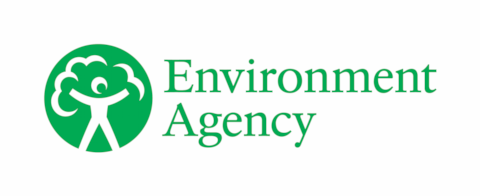Nature-based solutions: Environment Agency position statement
Published 17 July 2025
Applies to England
1. Purpose
This statement sets out the Environment Agency’s position on nature-based solutions (NbS).
We want our work with nature to be a core part of how we deliver outcomes, recognising the wider benefits to the environment and society this brings. We are committed to enabling greater uptake of NbS through:
- delivery
- funding
- guidance
- partnership working
- robust evidence
2. What NbS are
The International Union for the Conservation of Nature defines NbS as solutions that:
address societal, environmental and economic challenges through actions to protect, sustainably manage, and restore natural and modified ecosystems, benefiting people and nature at the same time
NbS can be implemented across a range of landscapes from urban to rural, upland to lowland and in coastal and estuarine locations. They might range from small scale changes in a single field to much larger schemes across a catchment or along a coast.
Examples of NbS include:
- restoring peatlands and saltmarsh
- installing leaky woody dams
- creating vegetated walls in cities
- planting woodland
3. The benefits of NbS
By incorporating natural processes, NbS can provide multiple benefits including:
- increased resilience to floods and coastal erosion – by slowing or storing flood water, reducing sediment loading and erosion and dissipating wave energy
- increased resilience to droughts – by storing water and increasing groundwater recharge
- improvements to people’s health and wellbeing – by providing access to nature
- supporting biodiversity and nature recovery – by offering a range of habitats
- improvements to air quality – through increasing urban vegetation to trap particulate pollution
- improvements to water quality – through reducing sediment runoff into rivers or using vegetation to reduce nutrients and pollutants in water
- enhanced urban liveability through well-designed sustainable drainage systems (SuDS) such as rain gardens, green roofs and swales
- reducing carbon dioxide emissions – by reducing the need for concrete and steel, through organic carbon storage, or both
- increasing resilience of hard engineered solutions – by reducing pressure on them
- contributing to economic growth – by reducing vulnerability to natural hazards and adding investment and recreational value to an area
4. The Environment Agency’s position on NbS
At the Environment Agency, nature is key to what we do. It’s our job to protect and enhance the environment, enabling nature’s recovery whilst contributing to sustainable growth, with an ambition for climate resilience and healthy air, land and water.
Nature is, and has always been, part of the solution as well as something to look after. Restoring nature also means restoring the services that it provides.
NbS are not new. There are extensive case studies of NbS across Europe.
For years peatlands have been restored, trees planted, rivers reconnected to their floodplain, and beaches shaped to take energy out of stormy seas.
We do not see NbS as a substitute for engineered solutions, instead, we think of them as part of a wider toolkit to achieve our outcomes.
4.1 How NbS relate to the Environment Agency’s role
Our interest in NbS relates to our roles as a risk management authority, regulator, adviser, responder, operator, and evidence-based organisation. Where appropriate, we prioritise the implementation of NbS, recognising their multiple co-benefits across environmental, social, and economic domains.
Our work on NbS varies according to which of these roles we are carrying out.
As a regulator and an operator
We must make sure that statutory environmental standards are achieved to ensure environmental protection.
As part of our strategic overview role and operational responsibilities for managing flood and coastal erosion risk
We recognise the role of NbS as part of a range of resilience measures to bolster resilience to flooding and coastal change.
It is our ambition for natural flood management (NFM) to become a more commonly used approach that is implemented, both stand-alone and in combination with other resilience measures including engineered flood management.
As an adviser
We work with partner organisations to identify appropriate NbS for a particular area, making use of our expertise evidence and environmental monitoring. We also support others in the design and implementation of NbS through targeted funding initiatives.
Stakeholder engagement is central to our work. We actively involve a broad range of individuals and organisations to ensure the success and longevity of NbS interventions, and to develop and share best practice.
4.2 Evidence for NbS
Our support for NbS is grounded in evidence. A summary of evidence can be found in Multiple benefits of nature-based solutions: an evidence synthesis. The 2024 update of Working with natural processes to reduce flood risk demonstrates increasing confidence in the effectiveness of these approaches.
While our understanding of NbS performance continues to grow, we recognise that there are still knowledge gaps. Currently, the strongest evidence relates to their use in flood risk management and nature recovery, with comparatively less available for water scarcity and quantity management.
We will continue to support research, pilot projects and conduct monitoring to help fill specific evidence gaps.
5. The application of NbS
As the Environment Agency, it is our ambition for NbS to be less of an innovation and more of a commonly used approach. We support the use of NbS where they are appropriate, effective and compliant with environmental legislation.
Early integration of nature into investment programmes, catchment planning and designs will make sure that natural processes complement traditional engineering from the outset. Successful NbS must meet their primary outcomes whilst aiming to provide wider environmental, social, and economic benefits.
5.1 Approach to planning NbS
Approaching new NbS is about the ‘right solution in the right place’. NbS are most effective when designed for a specific location and at an appropriate scale, working with the natural hydrological, coastal and geomorphological processes in an area.
To bring lasting value, designs should consider the whole-life cycle of:
- the natural asset
- local communities
- places
- the environment
NbS should form part of strategic and place-based planning. Their long-term success depends on early consideration of maintenance, with passive, self-sustaining designs prioritised where possible.
We are committed to taking a natural capital approach. This will allow the multiple benefits that NbS provide to be considered systematically in decision making using qualitative, quantitative and monetary evidence. We are reviewing how this might form part of future regulation.
There are several considerations to make when applying NbS relating to permitting, performance and funding.
5.2 Permitting NbS
We regulate activities that may harm the environment through environmental permits. For example, permits may be required for:
- water discharge, abstraction or impoundment
- groundwater activities
- work on or near a main river or sea defence
NbS implementation may need to be permitted under relevant legislation.
For example, we regulate general Environmental Quality Standards (EQS) to achieve water environment (Water Framework Directive) regulations good status in the water environment. These standards can be adjusted, tightened or relaxed according to local environmental conditions. These can also be improved through NBS.
All permit applications, including those that propose NbS, need to follow the ‘UNCLE’ principle (unambiguous, necessary, clear, lawful and enforceable). We are working to modernise permitting to support NbS through innovative approaches.
5.3 Performance of NbS
NbS can be a beneficial part of water treatment solutions alongside the conventional engineering and chemical dosing techniques, for example see Using wetlands to improve treated effluent discharge: RPS 260. NbS can be effective upstream of treatment works to reduce nutrient loads. This can lower the cost of treatment needed at downstream assets to meet discharge permit limits.
However, any NbS used as part of the wastewater treatment process must be capable of meeting any relevant environmental standards. We support the exploration of NbS in the wastewater sector and the expansion of the evidence base in this area.
Within a flood and coastal erosion risk management context, we need to invest in the right solution in the right place. While NbS are appropriate for some locations, a key part of our investment programme will remain:
- investing in new defences
- maintaining existing defences
- enabling property flood resilience measures
5.4 Funding for NbS
NbS are funded through several sources including public, private and third sector.
In recent years, government grant funding has been available through:
- the Environment Agency’s flood risk investment programme
- Environmental Land Management (ELM) schemes
- the Water Environment Improvement Fund
- several bespoke NFM programmes
Water company private sector funding comes primarily from the water industry national environment programme. Some actors in the food and drink sector have started to pay their suppliers for nature-friendly practices that make their products more resilient to climate impacts. Other funding includes developers and lottery funding.
We recognise the difficulty in integrating often outcome-specific funding sources to deliver multiple benefits. We will work to align funding streams where they can.
Our funding for NbS will be dependent on our settlement from government. From a flood and coastal erosion risk management perspective, it will also depend on the funding rules. We will work with government on these to support the delivery of more NFM.
We are working with partners to develop innovative funding approaches for landscape-scale water management. Ultimately this will mean all sectors dependent on natural assets integrating these new funding approaches into their core spending. This shift is essential to support catchment-based solutions and deliver long-term environmental and societal benefits.
6. Case studies of NbS
6.1 Dove Stones (Peak District) Royal Society for the Protection of Birds and United Utilities
At Dove Stones in the Peak District, United Utilities and the Royal Society for the Protection of Birds (RSPB) have collaborated through multiple water company investment rounds, facilitated by the Environment Agency, to restore severely degraded peatlands
These projects addressed severe peat erosion that contributed to high dissolved organic carbon (DOC) and colour levels in watercourses feeding into nearby reservoirs.
Restoration measures such as gully blocking with peat and stone dams, sphagnum moss reintroduction and rewetting have:
- improved water quality
- enhanced wildfire resilience
- supported nature restoration, including benefiting rare dragonflies and amphibians
This NbS has reduced water treatment costs while delivering multiple environmental benefits.
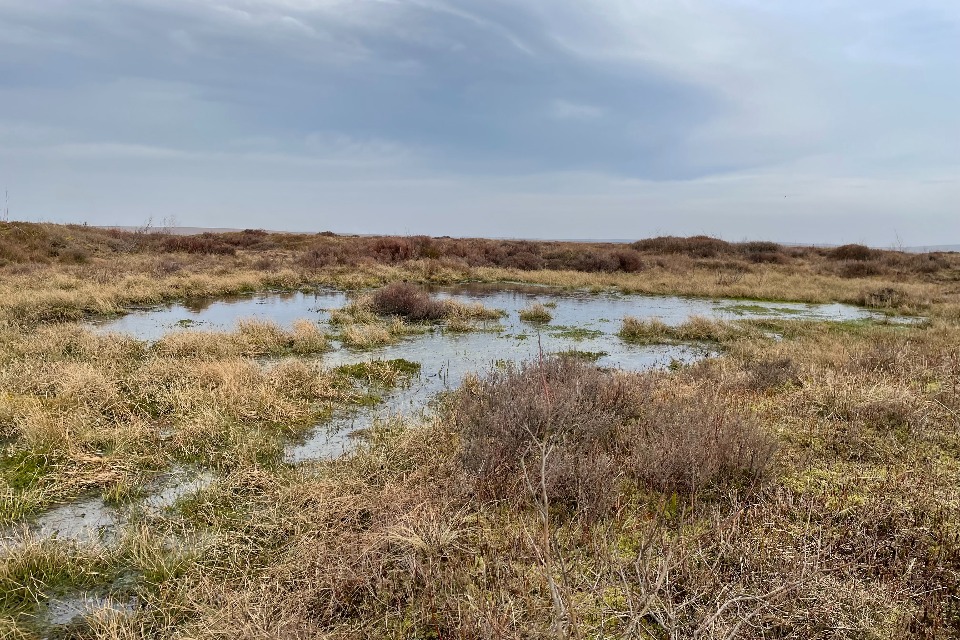
Water on Dove Stones by Environment Agency
6.2 The Evenlode project, Oxfordshire
Wild Oxfordshire (the Evenlode Catchment Partnership) and the Environment Agency developed the Evenlode Project to improve flood resilience in the Littlestock Brook catchment and achieve Water Environment Regulation objectives.
We worked collaboratively with farmers to change land management practices and implemented NbS measures such as leaky woody dams, field corner bunds, riparian tree planting, and nutrient retention ponds. This project successfully:
- reduced flood risk
- reduced soil and nutrient runoff
- improved water quality
- improved biodiversity
- improved carbon sequestration and recreation
The local parish council were a key partner by engaging in citizen science and delivering improved access to the network of new habitats.
Supported by monitoring and modelling, the project provides valuable evidence on the effectiveness of NbS in delivering multiple ecosystem services, demonstrating their role in building climate resilience.
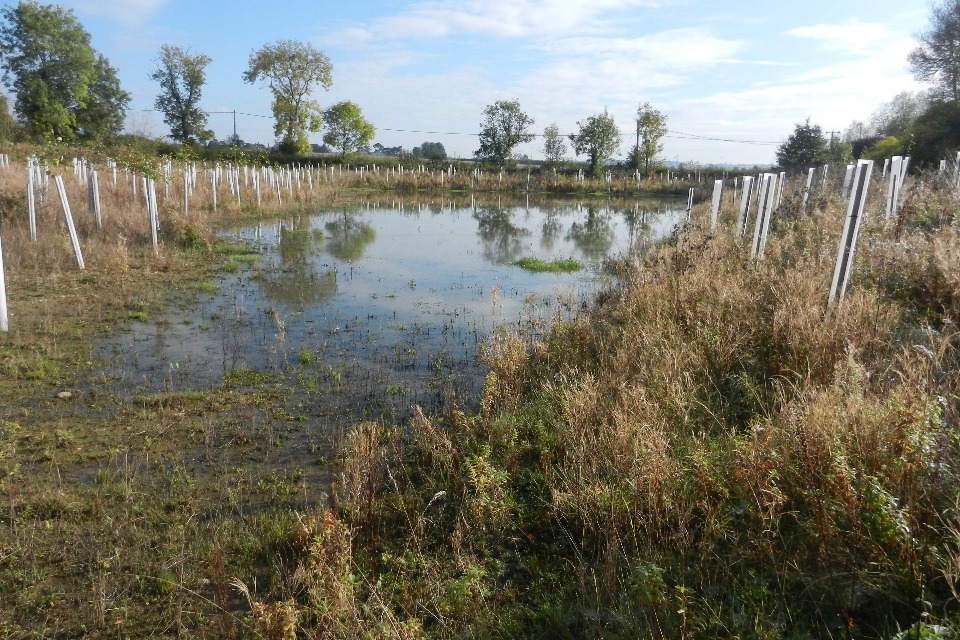
The Evenlode project, Oxfordshire by Environment Agency
6.3 Mayfield Park Development in Manchester
Mayfield Park is a new 6.5 hectare park in central Manchester. Mayfield Park Development worked with the Environment Agency to create Manchester’s first new city park for 100 years, a ‘green anchor’ for new investment.
The use of NbS was central to restoring the River Medlock and surrounding floodplain. This has created the setting for a resilient, sustainable and successful place that brings health and economic benefits to the wider community.
By co-ordinating our engagement with the development consortium through early planning advice, we provided timely and united input from their technical teams. This included sharing our technical expertise on:
- flood risk
- geomorphology
- watercourse design
- biodiversity improvements
- contaminated land remediation
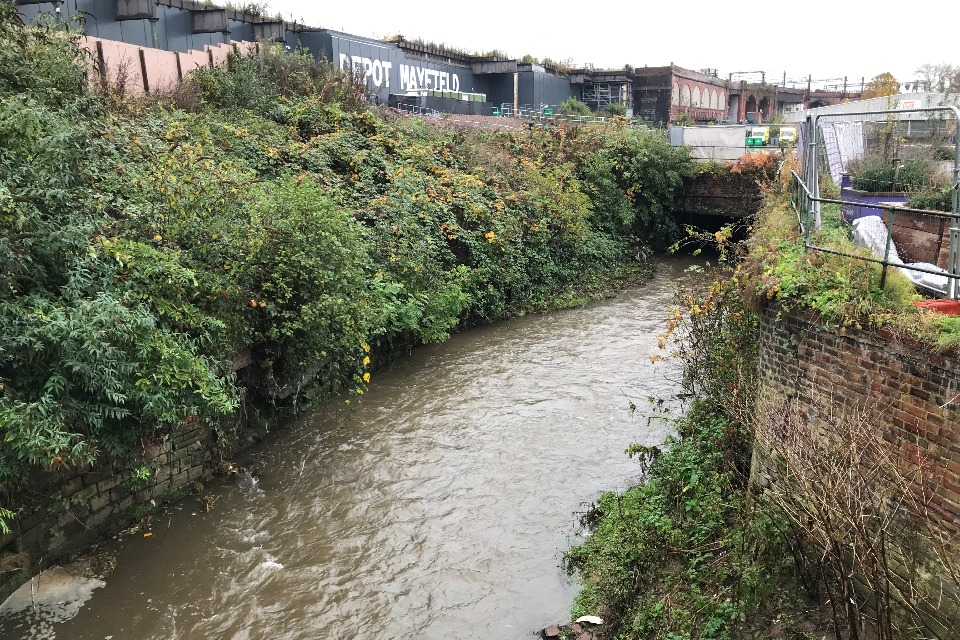
Before - Mayfield Park Development by Environment Agency
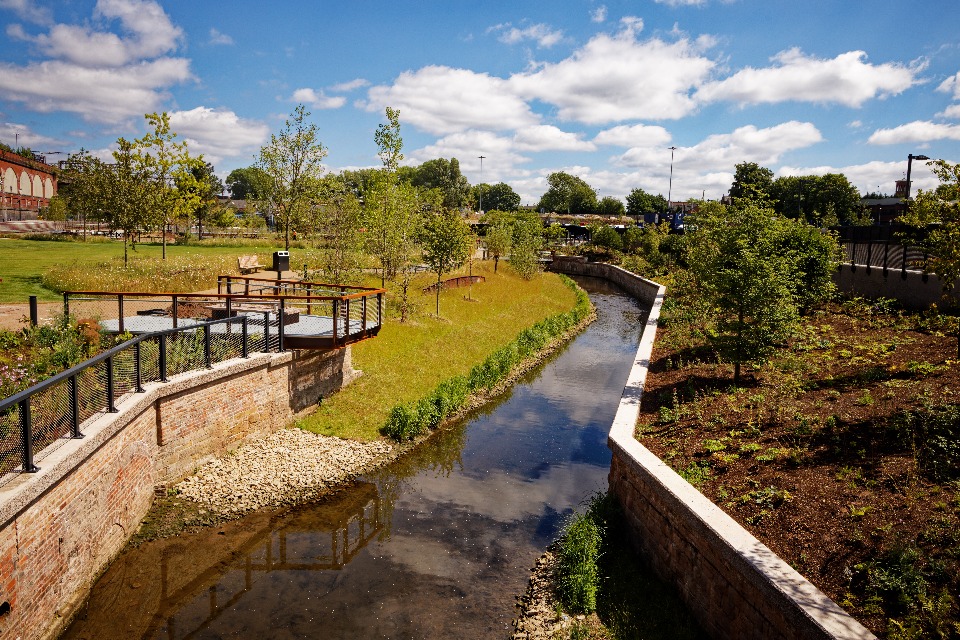
After - Mayfield Park Development by Martin Moss, Natural England
7. NbS in the future
As the Environment Agency, we will continue to use learning and experiences from across the country and beyond to inform how we fund and deliver NbS in the future. This will include:
- innovations in grant giving and benefits estimation as part of our NFM programme
- wider innovations delivered through the Flood and Coastal Innovations programme
We will continue to support farmers and land managers to take a more integrated approach to flood risk and water resource management through their role in the ELM scheme.
We are working with water companies to develop around 200 NbS projects in the next water industry Asset Management Plan (AMP) period to improve water quality, and 36 NbS projects contributing to water resource management.
We support the development of NbS for water resources outcomes in the context of planning for sustainable water resources. We expect them to feature in regional water resources plans, water company water resource management plans and ELM projects at catchment scale.
7.1 The Environment Agency’s vision for future NbS
We cannot drive the use of NbS alone. Successful NbS delivery depends on local partnerships and cross sector working across multiple disciplines, designing the right solution in the right place to achieve environmental, social and economic outcomes.
Our vision for the future is for people to work with nature to better manage the land-water environment as a ‘system’. Using a mix of interventions at regional, catchment and site-specific levels can bring multiple benefits to both people and the environment. NbS can also support important goals like flood protection and climate resilience.
We will continue to work with government to support their regulatory reform where there are legislative barriers to NbS being applied.
8. Contact the Environment Agency
General enquiries
National Customer Contact Centre
PO Box 544
Rotherham
S60 1BY
Email enquiries@environment-agency.gov.uk
Telephone 03708 506 506
Telephone from outside the UK (Monday to Friday, 8am to 6pm GMT) +44 (0) 114 282 5312
Monday to Friday, 8am to 6pm.
